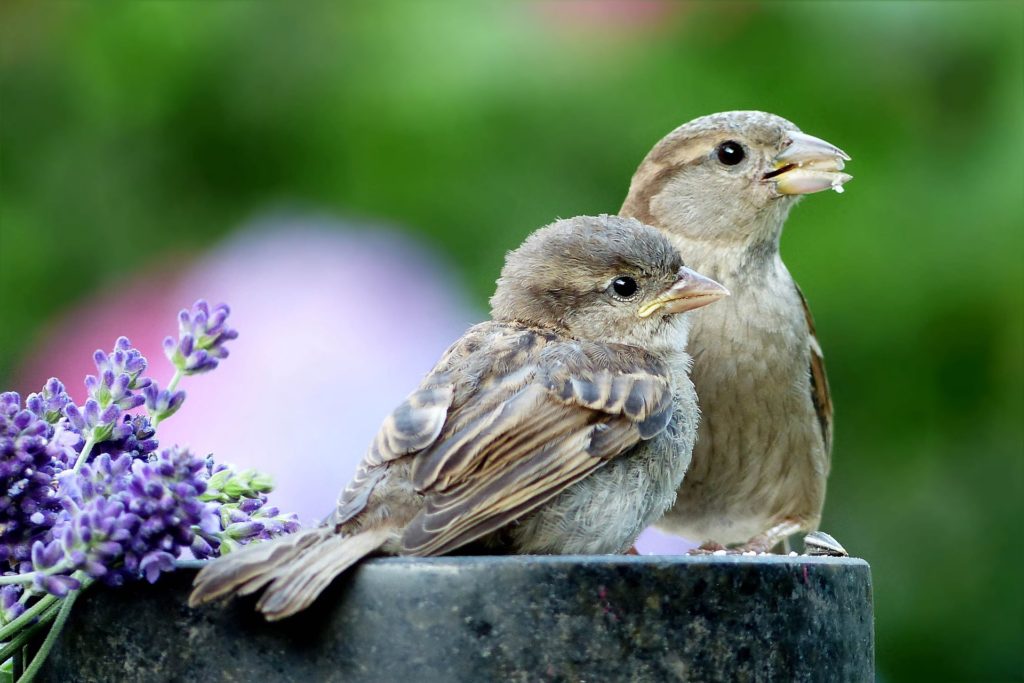We’re losing our birds at an alarming rate. The now-famous study in the journal Science found that North America has lost nearly three billion birds—or about 1 in 4 birds—since 1970. What is causing this unsettling trend of a declining bird population? “Clearing land, building houses, putting in subdivisions,” as Cliff Shackelford of the Texas Parks and Wildlife Department so succinctly put it. “Habitat loss is a daily, hourly issue for birds.” Though habitat loss is the main contributor for the population decline, other factors—like outdoor cats, window strikes, pesticides, and climate change—all play their part, according to the American Bird Conservancy.
When seeing data like this, it’s easy to get overwhelmed. But experts say there are very real ways to help our local birds—and in turn, the entire bird population—recover. But first, let’s talk a bit about why it’s so important that we help the birds.
Why Help the Birds?

According to American Bird Conservancy, more than 500 native North American birds are facing extinction. Short of simply loving birds and wanting to advocate for nature, there are also many sobering reasons to help the bird population. For one, they are a vital part of our ecosystem. They keep the insect population at a manageable level, preventing 10% of the nation’s crops from being consumed by pests. They’re also responsible for pollinating roughly 5% of the plants that we use for food and medicine. Not to mention the very real threat to forests, grasslands, and other green areas around the globe that oxygenate air and store carbon—something that humans need to exist (and which couldn’t be maintained without birds).
Yet the full scope of why birds are important can be expressed in this practical yet poetic quote:
“Birds are important because they keep systems in balance: they pollinate plants, disperse seeds, scavenge carcasses and recycle nutrients back into the earth. But they also feed our spirits, marking for us the passage of the seasons, moving us to create art and poetry, inspiring us to flight and reminding us that we are not only on, but of, this earth.”
Melanie Driscoll, Director of bird conservation for the Gulf of Mexico and the Mississippi Flyway
How You Can Help the Bird Population
The Science study found that 90% of the birds in decline came from the bird families that include some of our favorite backyard birds: warblers, sparrows, finches, and juncos. To support these and other local birds, here are some actionable and impactful steps to take:
Keep cats indoors
According to the American Bird Conservancy, cats are the #1 threat to our wild birds, causing 2.4 million bird deaths yearly. Not only does keeping your cats indoors help the bird population, but it also significantly increases your cat’s life expectancy. Learn more about how you can turn your outdoor cats into indoor cats in our blog post “Why Keep Your Cats Indoors?”

Prevent window strikes
Window strikes, or birds hitting windows, are responsible for at least 1 billion bird deaths annually. Simple measures can be taken to prevent this—like closing your curtains or blinds, using window decals, and turning most lights off at night. There are also several national Lights Out programs that seek to reduce city lights caused by skyscrapers and commercial buildings. To learn more about what you can do to about this problem on both a micro and macro level, see our blog post “5 Ways to Prevent Window Collisions and Keep Birds Safe.”
Add a bird house to your yard
Bird houses (including roosting and nesting boxes) provide a safe shelter for birds, one that is protected from predators and the elements. In winter, they’re a place for cavity-nesting birds to roost, and you’ll often find them snuggling together for warmth. And since birds’ natural habitats are being depleted year after year, don’t we owe it to our feathered friends to provide homes for them and their growing families? To learn what you can do to support your local bird families, check out our blog post “3 Ways to Help Birds During Nesting Season.”

Put out bird feeders and birdbaths
Avian experts suggest putting out multiple bird feeders and adding a birdbath to your yard to bolster the bird population. And don’t forget about the hummingbirds—their numbers have been in decline for decades too, and they could use the help as well. To learn how you can help them, read our blog post “The Ultimate Guide to Hummingbird Feeding.”
Feed birds high-quality food
Many bird seed mixes include fillers that birds will discard—which means birds aren’t getting the nutrients they need, and they’re making a mess (and attracting rodents) in your yard! Bird seed mixes with high-quality ingredients like black-oil sunflower seeds have the fat and protein birds need for migrating, nesting, and raising their young. Suet is another excellent fuel source—especially during winter, when natural food sources are scarce. To learn more about what and when to feed wild birds, see our blog posts “Eating Like A Bird: What They Crave And Other Fun Feeding Facts” and “Winter Is For The Birds: The Importance Of Winter Wild Bird Feeding.”

Stop using pesticides
Did you know that pesticides are the leading cause of the decline of grassland birds in the US? While this alarming statistic is mainly due to pesticides used in agricultural farming, the accumulative use of insecticides in home gardens also has an adverse effect on birds, bees, butterflies, and local wildlife. In fact, one study found that a single seed coated with neonicotinoids (the most widely used insecticide in the world) can kill a songbird. To learn more about creating a safe, hospitable garden for your local birds, read our blog post “Spring Has Sprung! How to Make Your Yard Bird-Friendly This Season.”
Do more research and show your support

In addition to the Chirp blog, there are many excellent bird conservation resources to use when looking to help the bird population, including:
- The National Audubon Society
- The Cornell Lab of Ornithology
- American Bird Conservancy
- North American Bird Conservation Initiative
- Partners in Flight
- BirdLife International
Chirp’s Promise to You

We are as passionate about saving the birds as you are, which is why a portion of every sale at Chirp goes to supporting a local or national nature advocacy organization. And since our philosophy is happy customers + happy birds = a happy life, we offer nothing but the best wild bird products on the market. We also love getting to know you while building our nature-loving community here in Big Bear, so please join us for a live or virtual event. We can’t wait to connect with you!


